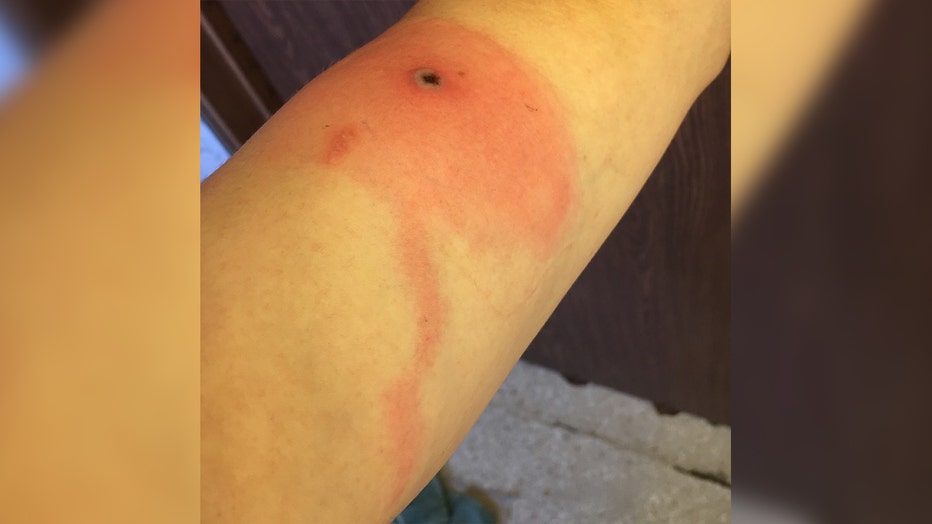What is Alaskapox? 1st known deadly case reported
PHOENIX - Health officials with the State of Alaska say a person in the state has died from Alaskapox.
According to a health bulletin, the person died in late January 2024 as a result of an infection. The man, described in the bulletin as elderly with "a history of drug-induced immunosuppression secondary to cancer treatment," lived in the Kenai Peninsula area, which is located to the south of Anchorage.
Here's what you should know about the virus, and whether you should be worried about it.
Alaskapox? What is it?

A photo showing a lesion caused by Alaskapox (Courtesy: Alaska Department of Health)
According to the website for the Alaska Department of Health, Alaskapox is caused by a virus that belongs to the orthopoxvirus genus. Other viruses in the orthopoxvirus genus, as listed on CDC's website, include cowpox, variola, which is an eradicated virus that caused smallpox, and Mpox, which is formerly known as monkeypox.
The virus, according to Alaskan health officials, was first identified in a patient in Fairbanks in 2015, and since then, additional cases have been reported in the state.
"Current evidence indicates that Alaskapox virus primarily occurs in small mammals. The virus has been most commonly identified in red-backed voles and shrews, based on small mammal sampling in the Fairbanks North Star Borough. However, it is likely that the virus is more widespread in Alaska's small mammal populations, and infections in humans may have occurred in other patients but were not diagnosed," read a portion of the website.
Experts also say on the website that domestic pets, such as cats and dogs, may also play a role in spreading the virus.
What are the symptoms for Alaskapox?
In a document, Alaskan health officials say people with Alaskapox have had one or more skin lesions, as well as other symptoms like swollen lymph nodes and joint or muscle pain.
"Nearly all patients had mild illnesses that resolved on their own after a few weeks," read a portion of the document, while noting the deadly case.
How long does it take to recover from Alaskapox?
In a journal article published on the National Library of Medicine's website, it is stated that in the first case of Alaskapox reported in a human being, the patient reported that the lesion took about six months to fully resolve. The NLM is part of the National Institutes of Health, which is a U.S. Government entity.
However, Alaskan health officials say nearly all patients thus far have had mild cases that resolved on their own after a few weeks.
Can Alaskapox spread from person to person?
Alaskan health officials say to date, no human-to-human transmission of Alaskapox has been reported.
"However, since certain orthopoxviruses can be transmitted through direct contact with skin lesions, we recommend that people with skin lesions possibly caused by Alaskapox keep the affected area covered with a bandage," read a portion of the website.
That patient who died, did he travel outside of Alaska?
According to the health bulletin, the man had no reported recent travel, and no close contacts with recent travel, illness, or similar lesions.
What are health officials saying about the death?
Health officials in Alaska noted the deceased patient's health history.
"The patient’s immunocompromised status likely contributed to illness severity," a portion of the health bulletin stated.
Experts also note in the bulletin that since the deadly case is the first Alaskapox case identified outside of Alaska's interior region, it is an indication that the Alaskapox virus could be "more geographically widespread in Alaska's small mammals than previously known."
For suspected cases of Alaskapox, what should be done?
Health experts said people with suspected Alaskapox infection should talk to their health provider. They should also keep their lesion or lesions covered up, and avoid touching it.

